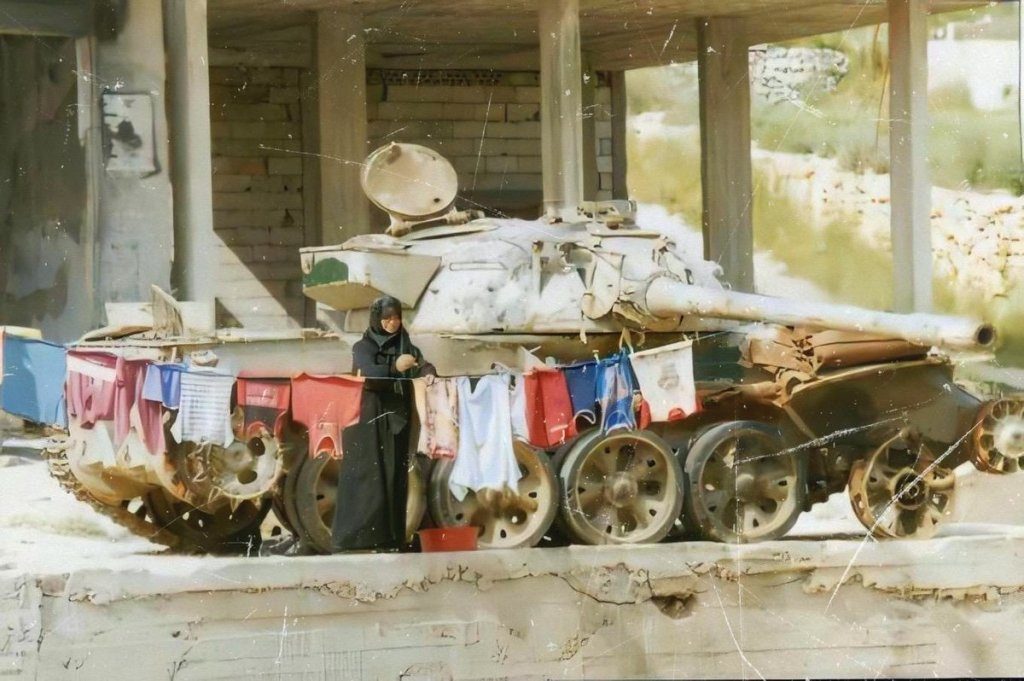
"For the first time we met a non-conventional army, but also an ideological organisation with deep faith: and this faith triumphed over us. We were more powerful, more technologically advanced and better armed but not possessing the fighting spirit ...They were stronger than us". This is what Brigadier General Effi Eitam, Commander of the 91st Division in counter-guerrilla operation in south Lebanon said.
Alon Ben-David, senior defence correspondent for Israel's Channel 13, specialised in defence and military issues, said: "Hezbollah stood up and defeated the powerful Israeli Army".
Former Prime Minister Ehud Barak, the architect of the Israeli withdrawal from Lebanon, said: "The withdrawal didn't go as planned. The deterrence of Hezbollah and its capability increased greatly. We withdrew from a nightmare". Barak meant he had planned to leave behind him a buffer zone under the control of his Israeli proxies led by the "South Lebanon Army" (SLA) commander Antoine Lahad. However, his plans were dismantled and the resistance forced Lahad's men to run towards the borders, freeing the occupied buffer zone. As they left Lebanon, the Israeli soldiers said: "Thank God we are leaving: no one in Israel wants to return".
In 1982, Israel believed the time had come to invade Lebanon and force it to sign a peace agreement after eliminating the various Palestinian organisations. These groups had deviated from the Palestinian compass and had become embroiled in sectarian conflict with the Lebanese Phalange, believing that "the road to Jerusalem passed through Jounieh" (the Maronite stronghold on Mt. Lebanon, northwest of Beirut, a slogan used by Abu Iyad). Israel intended Lebanon to become the domicile of its Palestinian conflict. It failed to realise that in so doing it was letting the Shiite genie out of the bottle. Signs of this genie began to appear after the arrival of Sayyed Musa al-Sadr in Lebanon and the return of students of Sayyed Muhammad Baqir al-Sadr from Najaf to their home country and residency in the Lebanese Bekaa. Also, the victory of Imam Khomeini and the "Islamic revolution" in Iran in 1979 was not taken into consideration by Israel, and the potential consequences for the Lebanese Shia were overlooked.
The 1982 Israeli invasion triggered the emergence of the "Islamic resistance in Lebanon", which later became known as "Hezbollah", and it forced Israel to leave Lebanon unconditionally in 2000. This made Lebanon the first country to humiliate the Israeli army. Following their victory over the Arabs in 1949, 1956, 1967 and 1973, Israeli officials had come to believe they could occupy any Arab country "with a brass band".
Israeli soldiers exited through the "Fatima Gate" (on the Lebanese border, also known as Good Fence, HaGader HaTova) under the watchful eyes of Suzanne Goldenberg on the other side of the border. She wrote: "After two decades and the loss of more than 1000 men, the chaotic Israeli withdrawal from southern Lebanon leaves its northern flank dangerously exposed, with Hezbollah guerrillas sitting directly on its border. The scale of the Israeli fiasco was beginning to unfold... After the Israelis pulled out of Bint Jubayl in the middle of the night, their SLA allies, already in a state of collapse in the centre of the strip, simply gave up. Branded collaborators, they and their families headed for exile. Behind them, they left tanks and other heavy equipment donated by their patrons. Shlomo Hayun, an Israeli farmer who lives on Shaar Yeshuv farm, said of the withdrawal, "This was the first time I have been ashamed to be Israeli. It was chaotic and disorganised."
What did Israel and its allies in the Middle East achieve?
In 1978, Israel occupied a part of southern Lebanon and in 1982, for the first time, it occupied an Arab capital, Beirut. During its presence as an occupation force, Israel was responsible for several massacres amounting to war crimes. In 1992, Israel thought that it could strike a death blow to Hezbollah by assassinating its leader, Sayyed Abbas Al-Mousawi. He was replaced by his student, the charismatic leader, Sayyed Hassan Nasrallah. Nasrallah has proved to be more truthful than the Israeli leaders, and thus capable of affecting the Israeli public through his speeches, as Israeli colonel Ronen, chief Intelligence officer for the Central Command of Israel Defence Forces, has said.
The new Hezbollah leader showed his potential for standing up to and confronting Israel through TV appearances. He mastered the psychological aspects of warfare, just as he mastered the art of guerrilla war. He leads a non-conventional but organised army of militants "stronger than several armies in the Middle East," according to Lieutenant General Gadi Eisenkot, the former Israeli Chief of Staff.
The Israeli doctrine relies on the principle of pre-emptively striking what is considered as a potential threat, in order to extinguish it in its cradle. Israel first annexed Jerusalem by declaring it in 1980 an integral part of the so-called "capital of the state of Israel". In June 1981, it attacked and destroyed the Iraqi nuclear reactor that France had helped build. In 2007, Israel struck a building in Deir Ezzor, Syria, before it was completed, claiming that the government had been building a nuclear reactor.
6 years after its withdrawal, Israel declared war on Lebanon in 2006, with the aim of eradicating Hezbollah from the south and destroying its military capacity. Avi Kober, a member of the department of political studies at Bar Ilan University and researcher at the Israeli BESA centre said: "The war was conducted under unprecedented and favourable conditions the like which Israel has never enjoyed - internal consensus, broad international support (including tacit support on the part of moderate Arab States), and a sense of having almost unlimited time to achieve the war objectives. The IDF's performance during this war was unsatisfactory, reflecting flawed military conceptions and poor professionalism and generalship. Not only did the IDF fail in achieving battlefield decision against Hezbollah, that is, denying the enemy's ability to carry on the fight, despite some tactical achievements, throughout the war, it played into Hizballah's hands."
Israel withdrew from the battle without achieving its goals: it was surprised by Hezbollah's military equipment and fighting capabilities. Hezbollah had managed to hide its advanced weapons from the eyes of Israeli intelligence and its allies, who are present in every country including Lebanon. The result was 121 Israeli soldiers killed, 2,000 wounded, and the pride of the Israeli army and industry destroyed in the Merkava Cemetery in southern Lebanon where the Israeli advance into Wadi al-Hujeir was thwarted.
Hezbollah hit the most advanced class Israeli destroyer, the INS Spear saar-5, opposite the Lebanese coast. In the last 72 hours of the war, Israel fired 2.7 million bomblets, or cluster bombs, to cause long-term pain for Lebanon's population, either through impeding their return or disrupting cultivation and harvest once they did return. "An unjustified degree of vindictiveness and an effort to punish the population as a whole", said the report of the UN commission of inquiry conducted in November 2006 (Arkin M. W. (2007), Divining Victory: Airpower in the 2006 Israel-Hezbollah War, Air University Press, Alabama, pp 67-71).
The battle ended, Israel withdrew again, closed the doors behind its army, raised a fence on the Lebanese borders, and installed electronic devices and cameras to prevent any possible Hezbollah crossing into Palestine.
When Israel's chief of staff Gabi Ashkenazi said "Israel instructed Hezbollah in the art of war", he was right. Hezbollah has learned from the wars that Israel has waged over the years. In every war, Hezbollah saw the necessity of developing its weapons and training to match and overcome the Israeli army (which is outnumbered) and which enjoys the tacit support of Middle Eastern regimes and the most powerful western countries. Hezbollah developed its special forces' training and armed itself with precision missiles to impose new rules of engagement, posing a real threat to the continuity of the permanent Israeli violations of Lebanon's sovereignty.
Today, Hezbollah has sophisticated weapons, including the armed drones that it used in Syria in its war against the Takfirists, and precision missiles that can reach every region, city and airport in Israel. It has anti-ship missiles to neutralize the Israeli navy in any future attack or war on Lebanon and to hit any harbour or oil platform. It is also equipped with missiles that prevent helicopters from being involved in any future battle. The balance of deterrence has been achieved. Hezbollah can take Israel back to the Stone Age just as easily as Israel envisages returning Lebanon to the Stone Age.
Hezbollah is Israel's worse nightmare, and it was largely created by the Israeli attempt to overthrow the regime in Lebanon, occupy Lebanon, and impose an agreement that Israel could then mould to its own liking. But the tables were turned: a very small force emerged in Lebanon to become a regional power whose powerful support was then extended to the neighbouring countries of Syria and Iraq. The harvest journey has begun.
Part 2:
Following its defeat in the second war on Lebanon, Israel discovered that its only way to suppress Hezbollah would be to close the supply line between Lebanon and Syria. That could only be achieved by removing President Bashar al-Assad from power, disrupting the "Axis of the Resistance" that extends from Tehran to Baghdad, Damascus, Beirut and Gaza. But Israel and the US, supported by Saudi Arabia, Qatar, the Emirates, Turkey, Europe and many other countries all failed to achieve their goal of making Syria a failed state. President Assad called upon his allies whose own national security was in jeopardy. If Syria were to fall, jihadists of al-Qaeda and the "Islamic State" would be fighting in the streets of Beirut, Baghdad and Tehran. The jihadists would also be powerful enough to remove Russia from its Syrian naval base and to export the war beyond the Levant's borders. So, Israel and the US failed to destroy Syria and to corner Hezbollah. On the contrary, Hezbollah has become stronger than ever. The Resistance has reaped the harvest of its victory. It has become the decision-maker with key institutions in Lebanon.
Israel sought to destroy Hezbollah because it is an obstacle to Israel's expansionist plans in Lebanon, namely to steal Lebanon's water and some of its territories, to force a peace deal of unconditional surrender, to break Lebanon's alliance with Iran and deprive Tehran of its strongest ally in the Middle East. For the last forty years, since the victory of the "Islamic Republic" in 1979 led by Imam Ruhollah Khomeini which unseated the US proxy ruler, the Shah of Iran, Washington has imposed sanctions, because Iran has refused to submit to US power and because it supports its allies in the Middle East, mainly Palestine, Lebanon and Syria, to stand against Israel.
In 2006, the US was involved in the planning of Israel's war on Lebanon. At the 2006 G8 Summit, President George W. Bush described the relationship between Hezbollah, Iran and Syria as one of the root causes of "instability": "The World must deal with Hezbollah, with Syria, and continue to work to isolate Iran." (Roshandel J. & Lean C.N. (2011) Iran, Israel and the United States, ABC-CLIO, CA, p. 109).
US Secretary Condoleezza Rice refused to mediate a ceasefire unless "the conditions are conducive", thinking Israel would win the war. Hezbollah was not only left on its own to face the US and Israel, but Lebanese US-Saudi proxies (Prime Minister Fouad Siniora and Druse leader Walid Jumblat) supported the position of the US and Israel, and argued that there was "no point in a ceasefire." (Wilkins H. (2013). The Making Of Lebanese Foreign Policy: understanding the 2006 Hezbollah-Israeli War, Routledge, Introduction).
When Israel failed to achieve its objectives, the US agreed to mediate an end to the war. Negotiations concentrated on ceasing all hostilities (not a ceasefire) between the two countries. Tel Aviv and Washington failed to obtain the deployment of United Nations Forces in Lebanon, UNIFIL, on the borders with Syria. The US sought to accommodate Israel in its attempt to gain by negotiation what it failed to achieve using its huge war machine in 33 days of the war in 2006. "Israel's objective was never realistic", said Israeli Foreign Minister Tzipi Livni.
When its attempt to control the Lebanese-Syrian borders failed after its defeat in the 2006 war, Israel had one remaining option with which to counter Hezbollah: close the road via Damascus and find a way to curb Hezbollah's supply line. This required war on Syria.
Since confronting Hezbollah face-face was no longer an option, Syria became the next target in the campaign to isolate Iran, as President Bush declared. The motives behind the war in Syria have been erroneously described by many researchers and analysts around the globe, who have depicted the war as the outcome of an "Arab Spring" against a dictatorial regime. Yet Saudi Arabia, Bahrein and other Gulf countries have been ruled by dictatorships and the same family members for decades and indeed are considered by the west as its closest- oil-rich- partners!
Actually, the war on Syria started just after the al-Qaeda 9/11 attack on the US. Four-star US general Wesley Clark disclosed Washington's plan as he learned of it in the days after 9/11: "occupy Iraq, Syria, Lebanon, Libya, Somalia, Sudan and finish with Iran." Just a few months after the US invasion of Iraq, US Secretary of State Colin Powell visited President Bashar al-Assad and warned him that the US would invade Syria if he refused to interrupt his support for the anti-Israel organisations, Hezbollah and the Palestinian groups: the Syrian president would share the same fate as the Iraqi President Saddam Hussein.
The 2003 invasion of Iraq was far from being a piece of cake. The US occupation generated new resistance among both Sunni and the Shia. This encouraged President Assad to rebuff the US threat, unaware of what the future held for Syria. Dozens of states, including Saudi Arabia, Qatar, Jordan, Turkey, the Emirates, Europe and the US all supported a regime change operation via Takfiri proxies. But the consequences of destabilising Syria gave a unique opportunity for al-Qaeda to blossom in Syria and a more lethal group emerged, the "Islamic State" ISIS. President Assad called upon his few allies, Iran, Russia and Hezbollah, to stand against the massive coalition gathered to create this failed state in Syria. The Syrian war which ensued offered unprecedented experience to the Syrian army, gave birth to a new Syrian resistance and offered unique warfare knowledge to Hezbollah, with a base for Iran that Tehran could never before have dreamed of having in the Levant.
Hezbollah had forced unconditional Israeli withdrawal from Lebanon in the year 2000 and challenged all those Israeli-US plans for a "new Middle East" after the second Israeli war on Lebanon in 2006. And the long nine years of war in Syria Hezbollah forced Hezbollah to refine its tactics and armaments and provided Hezbollah with an unprecedented victory. Just as Israel had boosted the creation of Hezbollah, it taught this quasi-state actor all manner of skills and forced it to acquire more training and weapons to repel wars and dismantle the enemy's objectives. Israel's former Chief of Staff and Prime Ministerial candidate Benny Gantz believed that Hezbollah had become one of the strongest irregular-organised armies in the Middle East, capable of imposing its rules of engagement and its "balance of deterrence" on the strongest classical army in the Middle East.
"Show me four or five states with more firepower than Hezbollah: they are the US, China, Russia, Israel, France, & the UK," Gantz said when speaking at the 2014 Herzliya Conference.
That was Israel's assessment in 2014. Six years later, last February, Israel's minister of defence Naftali Bennet said: "For every convoy you hit, you miss five convoys and slowly Hezbollah accumulates the critical mass of rockets [missiles] that threaten us."
Hezbollah has become stronger than many armies in the Middle East. Hezbollah is no longer the organisation that clashes with the Israelis on a hill or site or ambushes a patrol behind an alley. Rather, in Syria and Iraq, it has successfully experienced different warfare scenarios. It has acquired many advanced weapons and became a strategic threat to Israel if it ever contemplated waging outright war on Lebanon and Syria.
Israel set as its goal bringing down Assad in Syria and separating Syria from the "Axis of Resistance." Israeli defence minister Moshe Ya'alon said that "Israel prefers ISIS on its borders over Assad." But Israel, America, Europe, Saudi Arabia, Qatar and the Emirates have lost the war. Israel has now chosen to maintain the conflict because it fears that America would let go. This is why Israel is hitting hundreds of targets in Syria, — most of the time without no strategic value whatsoever.
Sources in the "Axis of Resistance" in Syria say that
"Israel targeted the Iranian HQ at Damascus airport (a building with green glass where Israel destroyed two floors). The following day, Iran restored it and it is back in operation. Israel has repeatedly targeted warehouses with Iranian weapons but also an abandoned training centre in the Kiswa area that has been empty for years. Their aim is to signal to the US that Israel is threatened and that the departure of the US forces would constitute a threat to Israel's national security. It is indeed too late for Israeli jets to make any difference to Syria's capabilities. Iran is not exporting weapons but manufacturing them. If it took Israel 9 years and 300 bombing raids to destroy Iranian warehouses in Syria, it took Iran only one year to refill and equip the Syrian army with much more sophisticated precision missiles — and all strategic missiles are in underground warehouses."Iran has only a few hundred advisers and officers in Syria, but it leads some tens of thousands of allies from Lebanon, Iraq, Pakistan, Afghanistan, and auxiliary Syrian forces that resemble irregular-organised military formations.
In Syria, Hezbollah was able to operate in an area ten times the size of Lebanon, which gave it a unique experience any army in the world would have wished to have. It was also subjected to attacks by a NATO member, Turkey, which used armed drones on the battlefield. That provided Hezbollah with a wealth of experience and taught them lessons that have become integrated into curricula at military schools and colleges in Iran with Hezbollah and their allies.
President Assad does not say that it is time for his allies (especially Hezbollah) to leave Syria. Rather, he says - according to this source - that "Syria has a debt to Hezbollah. Wherever Hezbollah wants to be, it will be also Syria's wishes." America and Israel created an unbreakable alliance between Syria, Iran and Hezbollah.
In Lebanon, Hezbollah has started to harvest its gains. Hezbollah was able to impose the name of the President of the Republic, General Michel Aoun, despite repeated opposition from Saudi Arabia and the US, the losers in the Syrian war. Lebanon remained without a president for several months until General Aoun assumed the presidency.
Hezbollah rejected multiple offers from different countries by giving the Presidency of the Parliament to anyone other than President Nabih Berri, leader of the Amal movement, who has been on this throne for decades. Hezbollah holds the real power - though not all of it - in Lebanon to call for the appointment of the President of the Republic and the Speaker of the Parliament.
As for the premiership, it cannot be assumed without Hezbollah's approval of the candidate. Hezbollah has sufficient political weight within the House of Representatives and the Presidency of the Republic to nominate or accept the nomination or direct the appointing of a prime minister. Former prime minister Saad Hariri is making sure his daily friendly contacts with Hezbollah are maintained because he would very much like to return to power. Hariri knows that the door to the premiership goes through one gate: Hezbollah.
This does not mean that Hezbollah wants to take control of Lebanon as a whole. Hezbollah leaders are aware that the Druse leader Kamal Jumblatt, Sunni leader Rafic Hariri, the Maronite Christian leader Bashir Gemayel and the Palestinians have all failed in controlling Lebanon and seizing the country. Hezbollah does not want to succumb to the same mistakes and doesn't wish to control all of Lebanon. This means that the counter influence of other countries exists and is well-rooted in Lebanon. For example, the US ambassador in Beirut is threatening the Lebanese government with a warning not to remove the Central Bank Governor Riad Salama. Also, the US removed a Lebanese-Israeli agent, Amer Al-Fakhouri, via a plane which landed him at the US embassy without taking into consideration Lebanese sovereignty. The US supports the Lebanese army and internal security forces to maintain its dominance over certain key figures.
Syria has given the Secretary-General of Hezbollah, Sayyed Hassan Nasrallah, powers in Lebanon that he would not have obtained without the intervention of Israel and the allies in Syria. Hezbollah has managed to preserve its military pipeline via Syria by defeating the Takfiris (al-Qaeda and ISIS) and has prevented them from establishing an "Islamic emirate" in Lebanon and Syria.
Hezbollah's victory comes at a price: thousands of martyrs and thousands of wounded. However, the resulting harvest is so abundant and strategic that the Lebanese Shiites now enjoy more power in Lebanon and Bilad al-Sham than they have since the year 661 when the fourth caliphate's Imam Ali bin Abi Talib was killed.
Part 3:
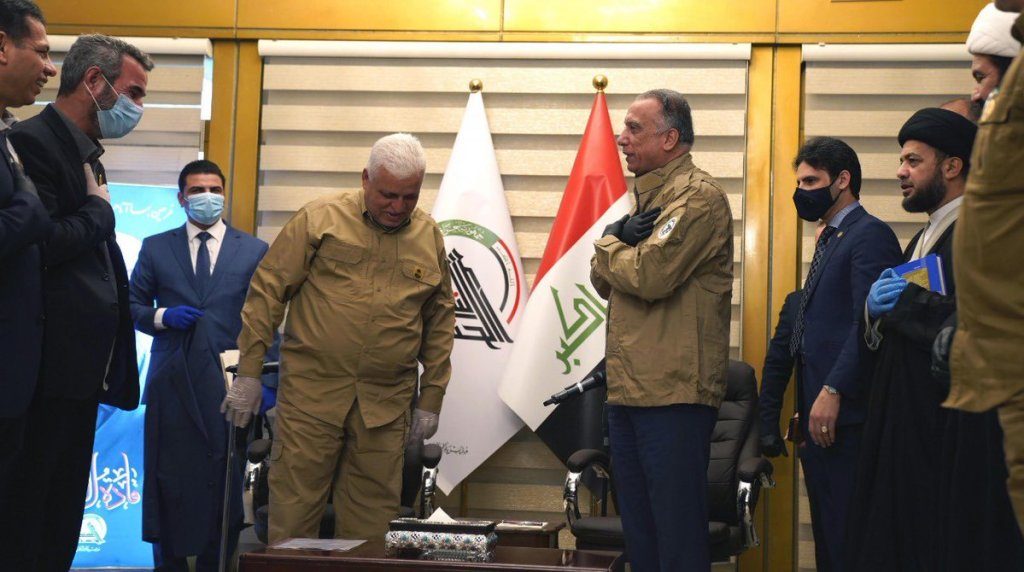
Iran has vowed, in its constitution (articles 2 and 3), to support all oppressed peoples. It started with Palestine whose leaders were informed by Iran that "no sanctions would be allowed to reduce Iran's financial and training support for the Palestinians to recover their stolen territory." Iran supported the Lebanese when Israel invaded their country. It supported Syria when Saudi Arabia, Qatar, Turkey and combined western nations allowed Jihadists to create their Islamic Emirates in the Levant, creating a potentially failed state situation. And it supported the Iraqis when the US occupied Iraq and allowed ISIS to overrun a third of the country.
Iraqi Shia politicians - promised "democracy and stability" - supported the US to remove Saddam Hussein. Iraqi Sunni resistance complained to Hezbollah about the lack of Iraqi national unity against the US forces, in particular the Shia stand in favour of the occupier. Hezbollah's position was clearly announced by its secretary general Sayyed Hassan Nasrallah before the US invasion. Notwithstanding the atrocities of Saddam Hussein against Iraqis in general and the Shia in particular, for Hezbollah, standing against the US was a top priority over removing Saddam Hussein. Saddam's rule was coming to an end before the 2003 US invasion. A decade of sanctions against Saddam Hussein had crippled his power and the Shia resistance - supported by Iran - was already gaining momentum when the US decided to move in on that false pretext: removing non-existent "Weapons of Mass Destruction".
Notwithstanding the Iraqi Shia support to the Americans, the US did not hide its aggressive intentions against the "Axis of the Resistance" nor its aim to totally deprive Iran of any allies. Iran moved into Iraq to support the Sunni resistance first and trained those few Shia willing to fight against the US occupation forces. Hezbollah became attractive to both Sunni and Shia.
Many Iraqi Shia politicians complained to Hezbollah about the training it provided to Sayyed Moqtada al-Sadr's Jaish al-Mahdi in the first years of the US occupation. Hezbollah maintained close relationships with Iraqi politicians who requested mediation to form their government and to reduce the gaps among them. Endless meetings were held in Beirut between Hezbollah officials and Sunni and Shia politicians before the formation of every government.
When ISIS occupied a third of the country, Iraq found in Hezbollah - who forced Israel to withdraw and defeated it in 2006 - a reliable and adequate ally to return to during the US invasion of the country. Prime Minister Nuri al-Maliki contacted Sayyed Hassan Nasrallah asking for advisors and trainers to stop ISIS's advance. Twenty-four hours later, Hezbollah sent in dozens of officers who began training those Iraqis willing to bear arms, stop ISIS and defend their country.
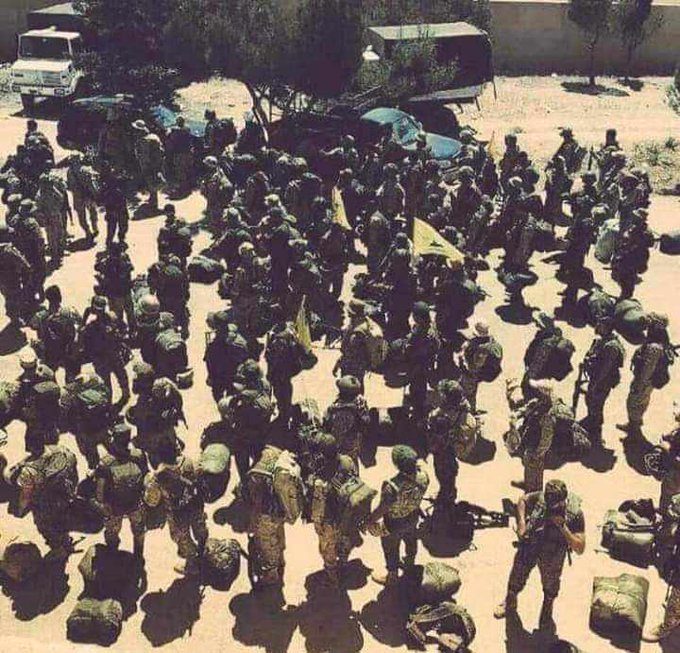
By stepping back, the US gave Hezbollah a chance to move into Iraq, in 2014 and led the Marjaiya to call for the formation of Hashd al-Shaabi, a popular force ready to take up arms to defend their country. Iran was the only country helping both Baghdad and Erbil: Sunni, Shia, Christians and Kurds were armed by Iran against ISIS, under watching US eyes. The US allowed the creation of Hashd al-Shaabi and allowed Iran and Hezbollah to plant strong roots in Iraq. The US training of the Iraqi army proved ineffective. The Iraqi army lacked patriotic convictions and fighting spirit. Hezbollah had both, but also used the experience to enhance its warfare capability, fighting on open space in the desert, an experience different from the one in Lebanon and Syria.
In 2020, the "Axis of the Resistance" won all the wars it fought in Palestine, Lebanon, Syria, Iraq and Yemen; Hezbollah was present in all theatres. The US assassination of Qassem Soleimani, leader of this "Axis of the Resistance", was morally painful but did not downgrade Iran's commitment or financial obligations to its allies. In Yemen, Sayyed Abdel Malek Badreddin al-Houthi asked Saudi Arabia to exchange a Saudi pilot and 9 Saudi officers he captured during their bombing of Yemen with Mohammad al-Khodary, former Hamas representative and another 60 Palestinians and Jordanians arrested in Riyadh, indicating how the "Axis of the Resistance" bond is unified across the borders.
"Negotiating hostages exchange with the Israelis or the Americans is much smoother than negotiating with Saudis whose responsible have no consideration to the life of their own captured officers," said a leader of the "Axis of the Resistance".
The Hamas stand has changed: from fighting against President Assad to fully believing that the only way to recover the Palestinian usurped territories is through a robust unity with the "Axis of the Resistance". The call for the "Jerusalem Day" - celebrated on the last Friday of the month of Ramadan called by Imam Khomeini - is unifying all members of the "Axis of the Resistance" more than ever. Tehran informed the Palestinians that the "US maximum pressure" is irrelevant to the Iranian commitment to Palestine, and that the cause will be supported as long as the Palestinians are ready to fight for their territory.
Israel and the US will not give up, and they are wary of Hezbollah's growth and influence. They are trying to counter its supporters abroad, putting Hezbollah on the US State Department terrorism list - a totally ineffective move. The US believes the current global financial crisis presents an opportunity to gain what was impossible by war. They can be expected to return fire, but meanwhile the "Axis of the Resistance" will continue to resist and find more ways to reduce US influence in the Middle East.
This comes at a time when China and Russia are ready to show a more friendly and economically aggressive approach in favour of Middle Eastern countries. Hezbollah's regional successes foreshadow global challenges to US power. Many leaders of the "Axis of the Resistance" may be killed without irreversible impact on the objectives and strategies of the camp resisting Israel and US hegemony. The objective and achievements of the "Axis of the Resistance" have become irreversible.
Proofread by: Maurice Brasher and C.G.B.
This article is translated free to many languages by volunteers so readers can enjoy the content. It shall not be masked by Paywall. I'd like to thank my followers and readers for their confidence and support. If you liked it, please don't feel embarrassed to contribute and help fund it, for as little as 1 Euro. Your contribution, however small, will help ensure its continuity. Thank you.
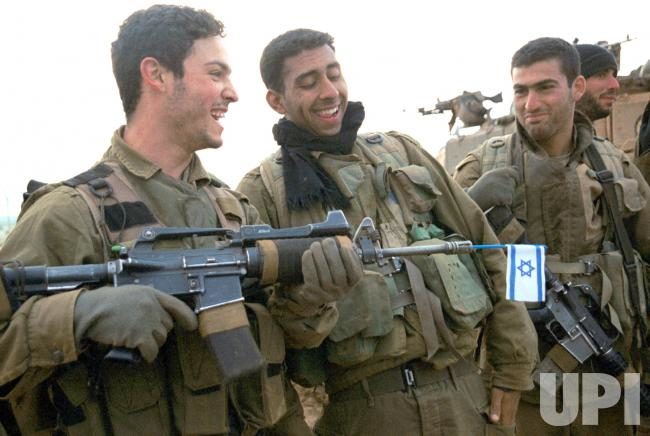
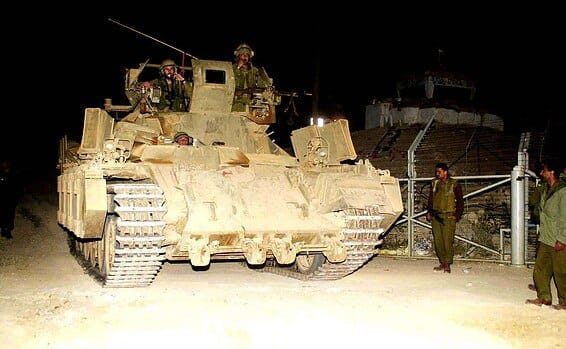
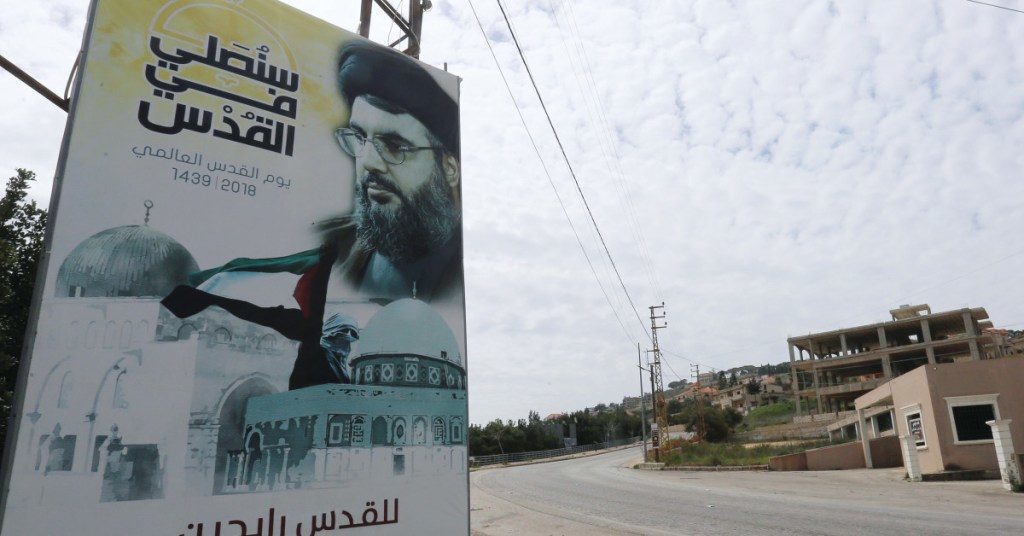
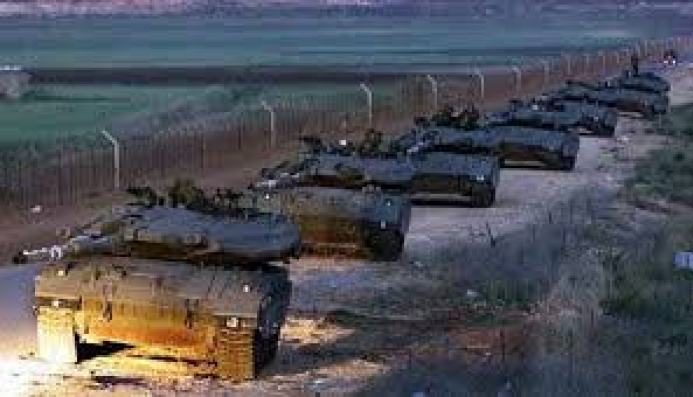
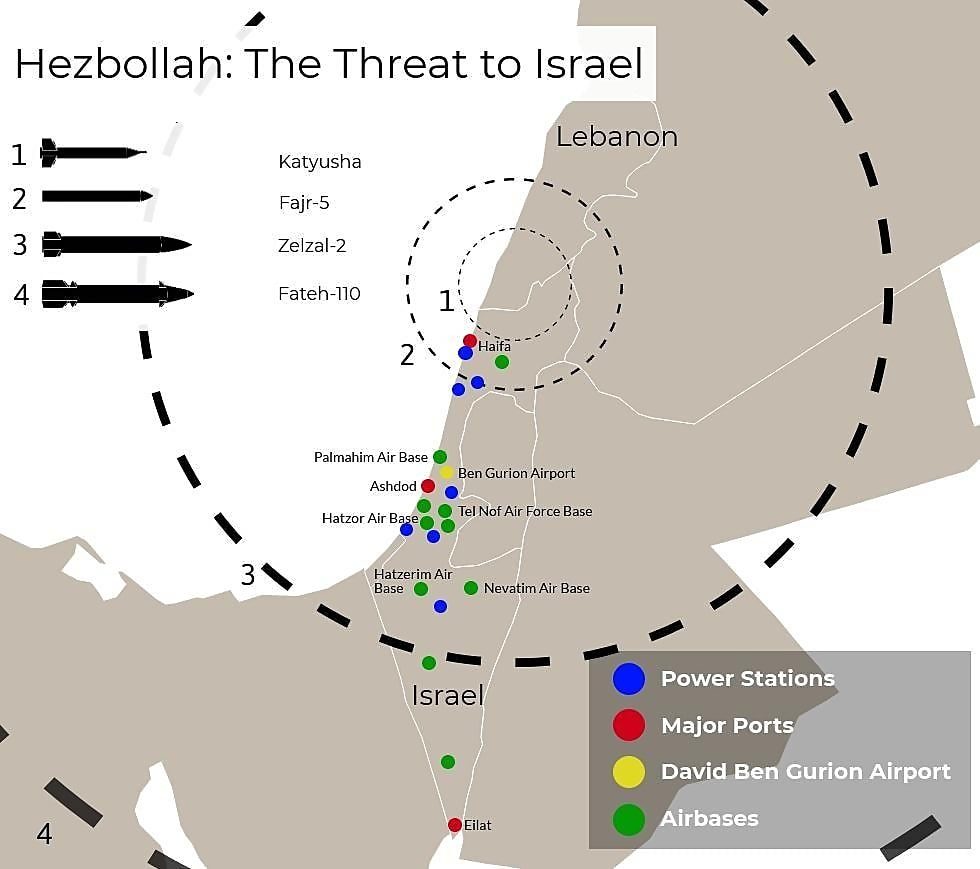
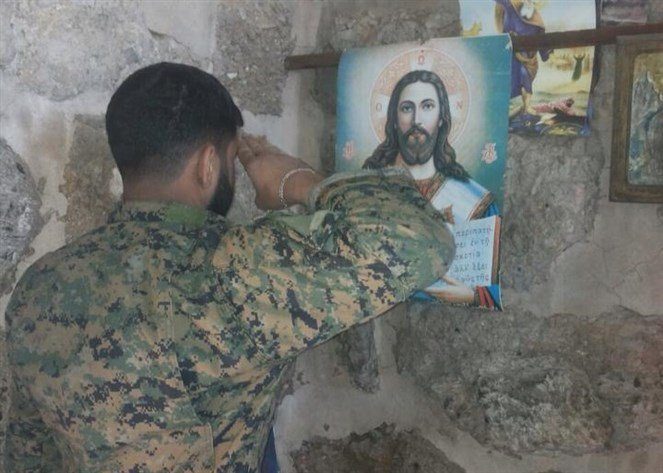
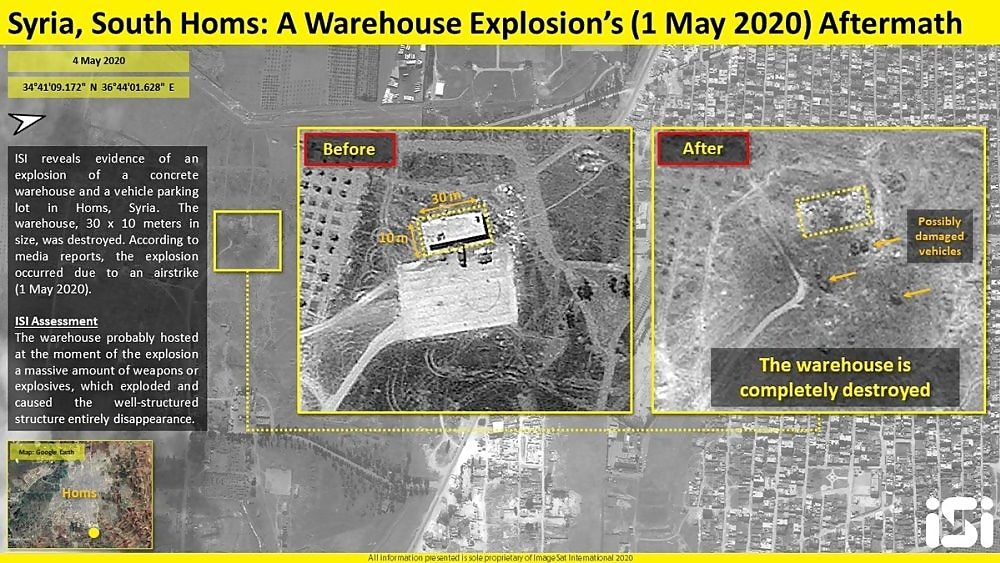
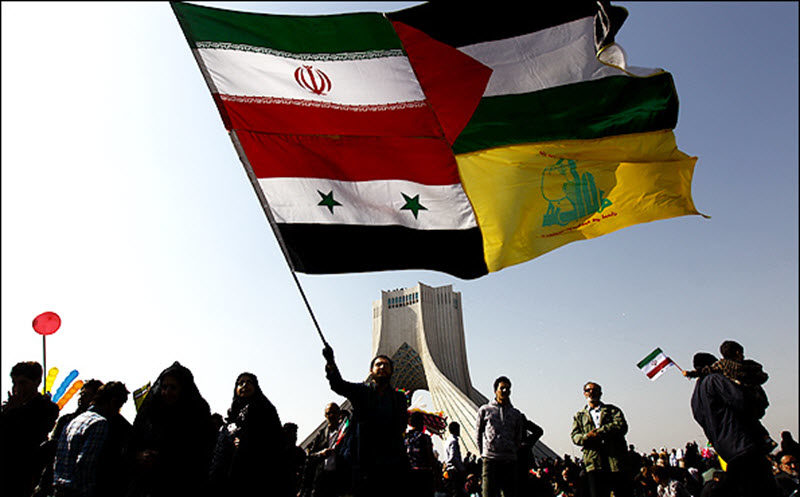
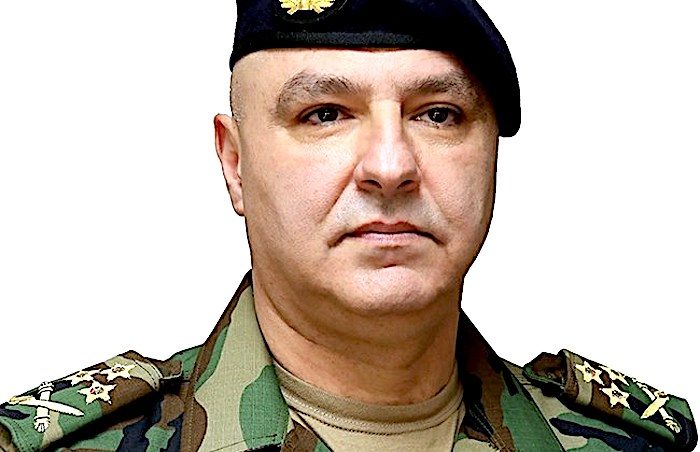



Comment: See also: